
Mirididae
Capsid & Leaf Bugs

Calocoris roseomaculatus - West Glamorgan, Wales - july 2011
The Miridae comprise the largest family of Heteropteran bugs with over 6000 species worldwide. There are over 200 species in the British Isles and are found in practically every terrestrial habitat, from barren mountain tops to the shoreline.
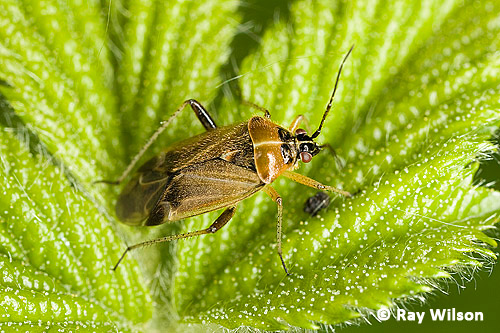
Tarnished Plant Bug (Lygus rugulipennis) - Cheshire, England - May 2009
The Tarnished Plant Bug (Lygus rugulipennis) is a very common British insect and can easily be found in large numbers, particularly on nettles. It is a garden pest, and causes white spots on leaves whereever it feeds.
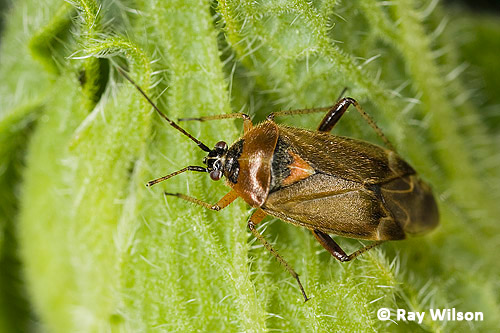
Tarnished Plant Bug (Lygus rugulipennis) - Cheshire, England - May 2009
I am not sure what is happening in the photo below (left). At first I thought the darker bug on the right was preying on the Tarnished Plant Bug but on closer inspection that doesn't appear to be the case. In none of the 15 photos I took from various angles is the rostrum piercing the body of the other insect. Another possibility I thought of was that the Harpocera thoracica was attempting to mate with the Tarnished Plant Bug, since its abdomen appears to be curving back towards the abdomen of the plant bug. But that would mean this is an attempted hybrid mating as they are two different species. The last possibility that occured to me was that maybe the Harpocera bug had its abdomen curled downwards simply because it was ovipositing (similar to the female of the same species in the photo on the right) and it was just a coincidence that the Tarnished Plant Bug was underneath it.
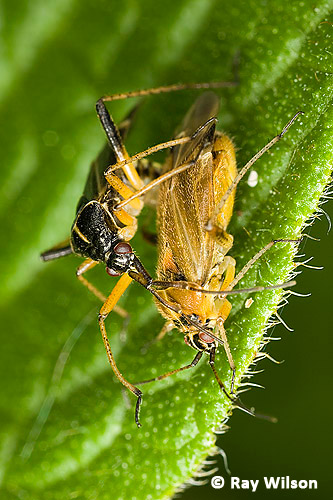 Harpocera thoracica (left) & Lygus rugulipennis (right) |
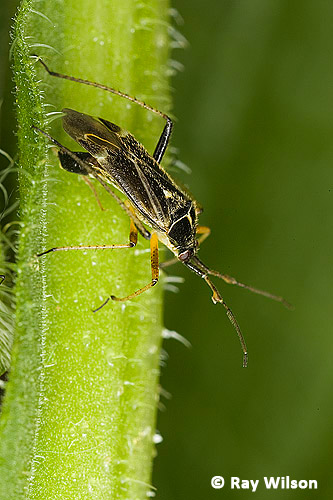 Female Harpocera thoracica ovipositing |
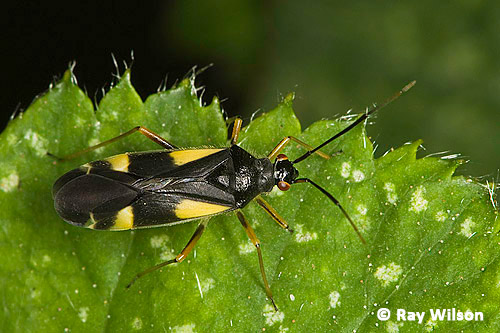
Adult Dryophilocoris flavoquadrimaculatus - Cheshire, England - May 2008
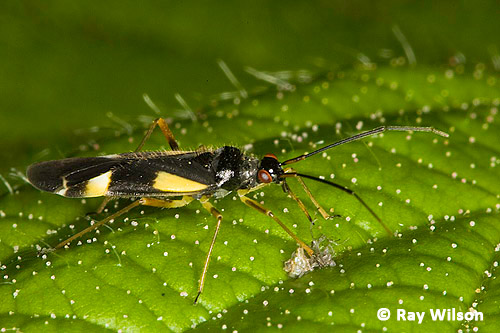
Adult Dryophilocoris flavoquadrimaculatus - Cheshire, England - May 2008
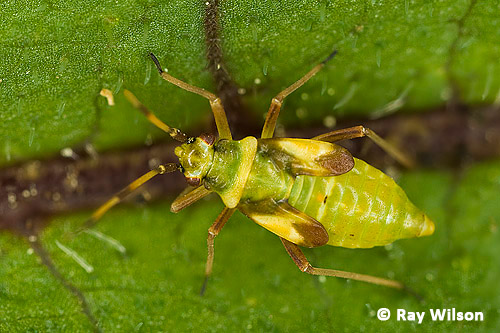
Dryophilocoris flavoquadrimaculatus nymph - Cheshire, England - May 2009

Cyllecoris histrionius nymph - Cheshire, England - May 2009
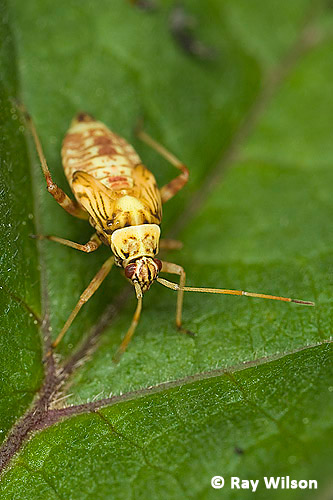
Rhabdomiris striatellus nymph - Cheshire, England - May 2009

Rhabdomiris striatellus nymph - Cheshire, England - May 2009
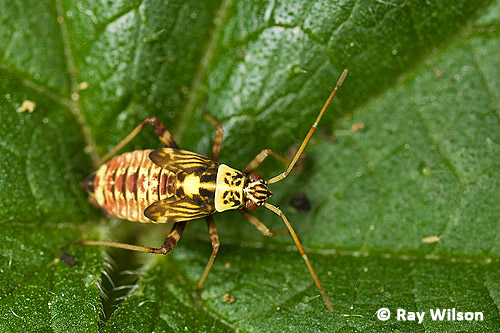
Rhabdomiris striatellus nymph - Cheshire, England - May 2009

Adult Rhabdomiris striatellus - Cheshire, England - May 2009
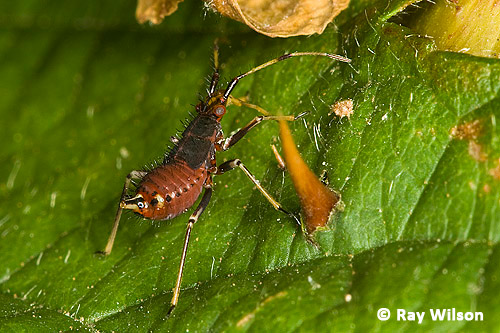
Deraeocoris ruber nymph - Cheshire, England - June 2008

Adult Deraeocoris ruber |

Stenodema laevigata |

Common Green Capsid (Lygocoris pabulinus) - Cheshire, England - August 2009
The photo below is a crop of the above photo showing the fine, light brown spines on the tibia that help distinguish the green Lygocoris bugs from all other British green mirid bugs.

Common Green Capsid (Lygocoris pabulinus) - Cheshire, England - August 2009

Extremadura, Spain - May 2005

Extremadura, Spain - May 2005
Ray Wilson owns the copyright of all images on this site.
They may not be used or copied in any form without prior written permission.
raywilsonphotography@googlemail.com